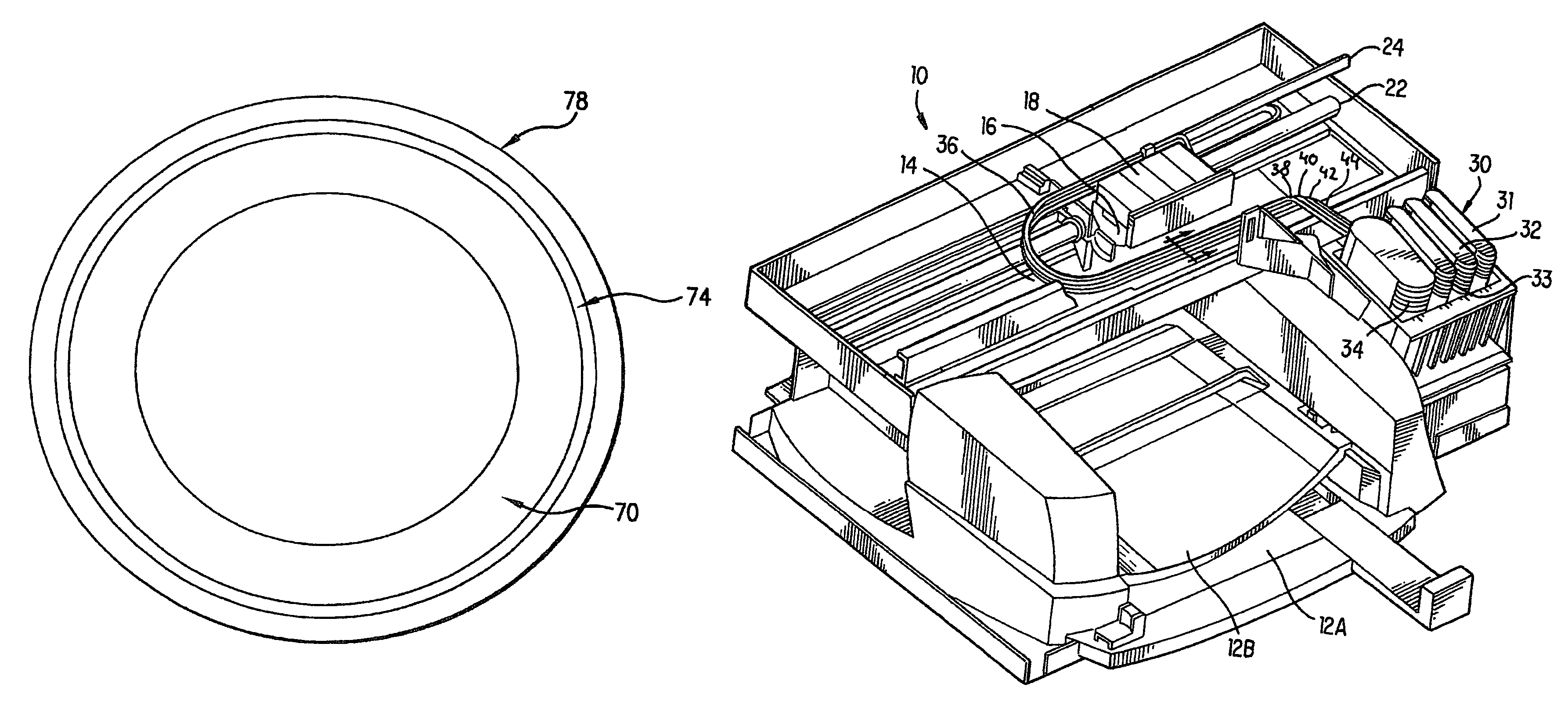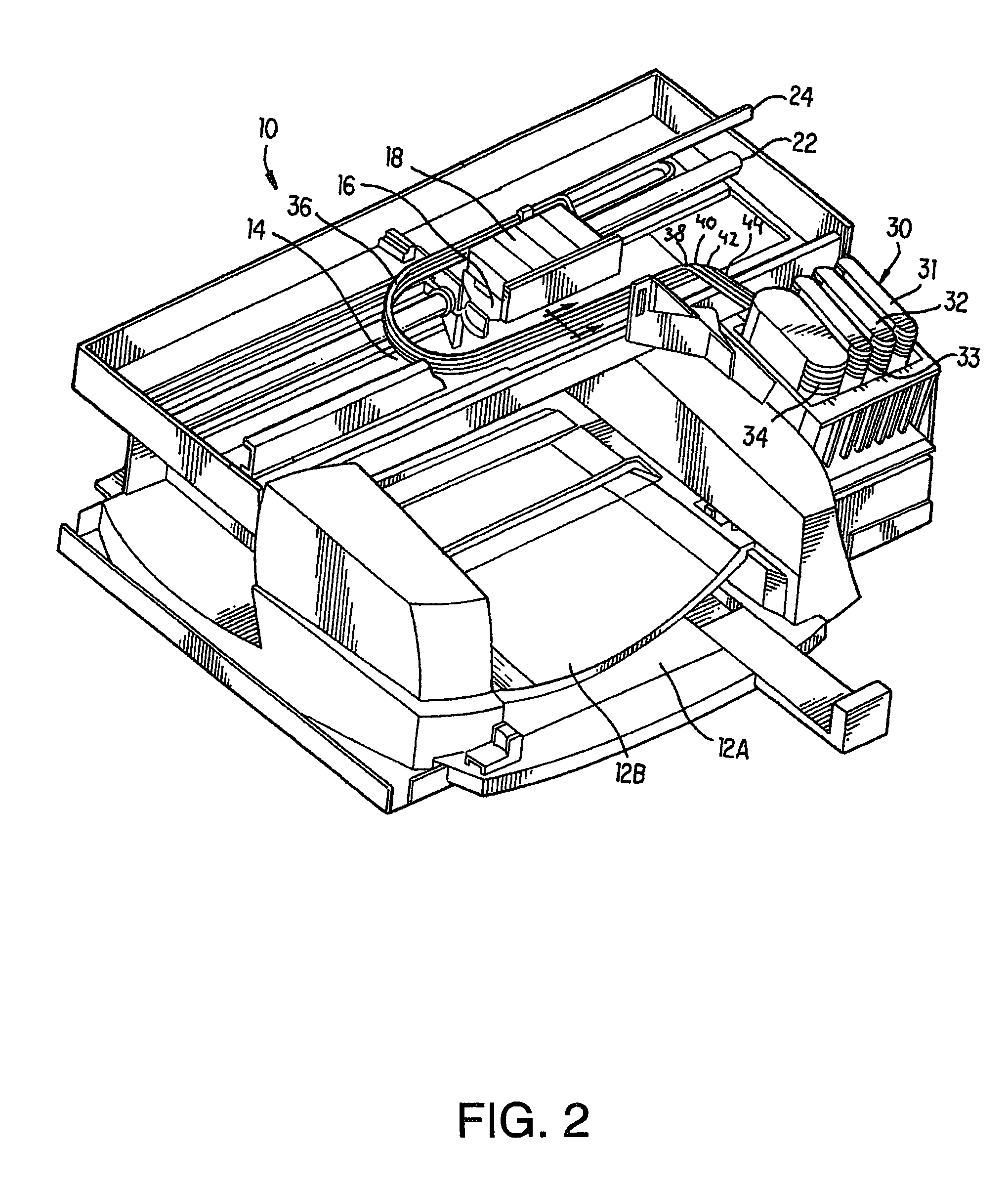Inkjet printer and a hose for use in the inkjet printer
a technology for inkjet printers and hoses, which is applied in printing and other directions, can solve the problems of insufficient air and vapor tightness of hoses, poor durability of hoses, and inability to meet the needs of use, and achieves sufficient smoothness, convenient use, and durable hoses.
- Summary
- Abstract
- Description
- Claims
- Application Information
AI Technical Summary
Benefits of technology
Problems solved by technology
Method used
Image
Examples
Embodiment Construction
[0012]FIG. 1 schematically shows a cross-sectional view of a hose for transporting fluid ink. This hose as an internal diameter of 2.25 mm and an external diameter of 4.15 mm. Layer 70 consist essentially of LDPE (Low density polyethylene), in particular the material “Exact Plastomer 8210” available from DEX-Plastomers, a DSM / ExxonMobil Chemical joint venture registered in the Netherlands. This layer has a thickness of 0.9 mm. Layer 74 consists essentially of a 0.2 mm thick polyurethane compound, in particular the compound “Elastollan 1180 A”, a thermoplastic polyether-polyurethane, available from Elastogran GmbH (belonging to the BASF group), Lemförde, Germany. Layer 78 has a thickness of 0.8 mm and consist essentially of LDPE, in particular the material “Exact Plastomer 8210”. Such a hose can be made by well known co-extrusion processes such as for example as known from Hensen, Knappe, Potente: Kunststof-Extrusionstechnik I, München: Carl Hanser Verlag, 1989.
[0013]FIG. 2 is a pers...
PUM
 Login to View More
Login to View More Abstract
Description
Claims
Application Information
 Login to View More
Login to View More - R&D
- Intellectual Property
- Life Sciences
- Materials
- Tech Scout
- Unparalleled Data Quality
- Higher Quality Content
- 60% Fewer Hallucinations
Browse by: Latest US Patents, China's latest patents, Technical Efficacy Thesaurus, Application Domain, Technology Topic, Popular Technical Reports.
© 2025 PatSnap. All rights reserved.Legal|Privacy policy|Modern Slavery Act Transparency Statement|Sitemap|About US| Contact US: help@patsnap.com



